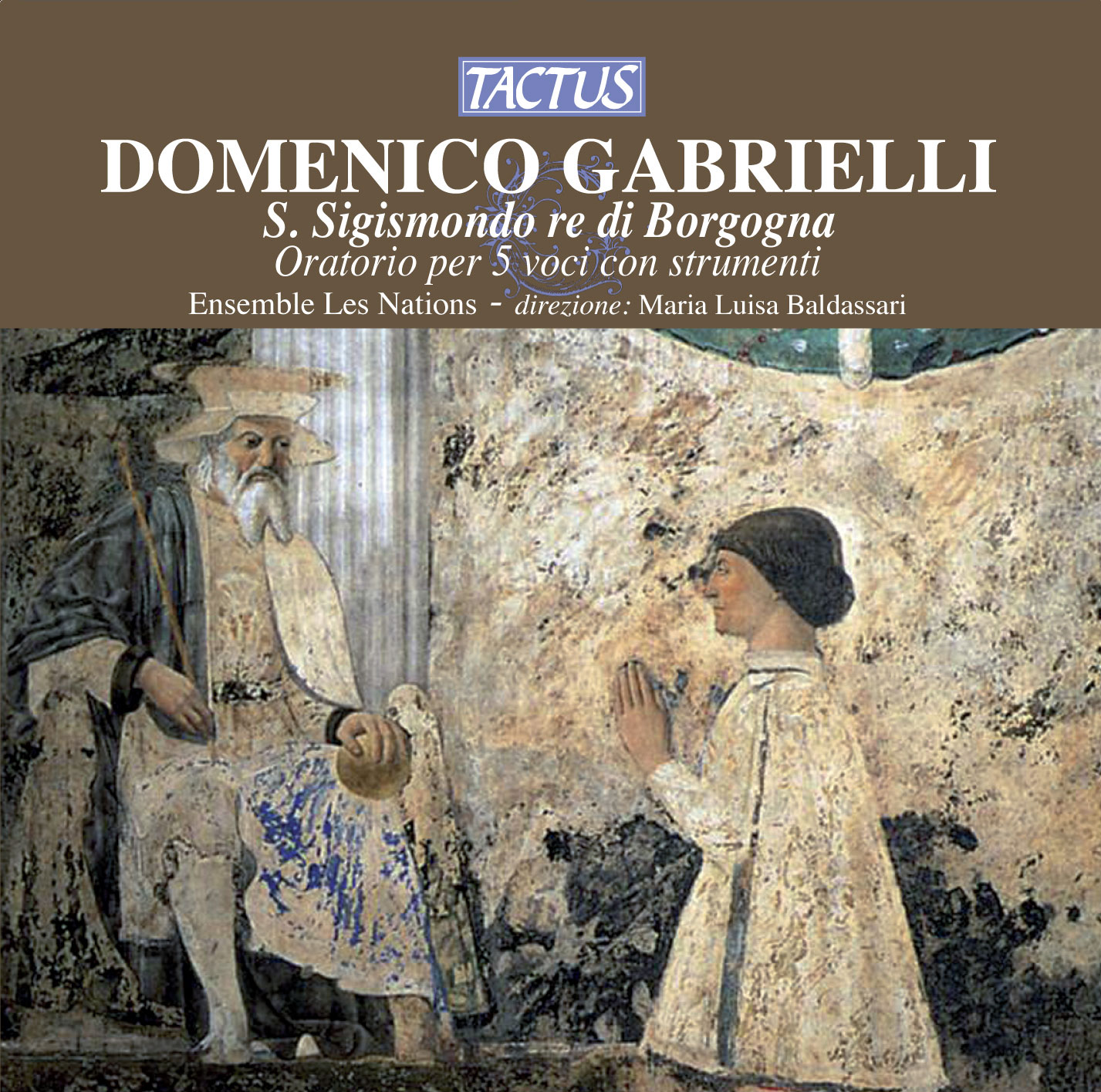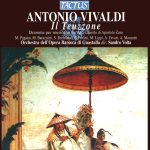GABRIELLI DOMENICO
The musical prestige of Bologna during the baroque period was founded upon the activities of two ancient civic institutions: the musical chapel of San Petronio, which was founded in 1436 and actively flourished throughout the entire 17th century; and the Concerto Palatino della Signoria, whose origins may be traced back to the civic criers of the 13th century.
The two institutions, though of different standing, were equally desirable positions of employment: the first for its indisputable professional prestige, the second for the much its much more remunerative and enticing salary.
In the Seicento, the intense cultural life of the city was further fostered by the foundation of various accademie, instituted with the primary objective of patronizing and realizing musical activities as well as instructing their members in musical theory and practice.
Among these institutions, the celebrated Accademia Filarmonica, founded in 1666 and one of the most important musical societies of all time, was the vital core of Bolognese music.
The oratorio as a genre enjoyed particular favor in Bologna, flourishing first in the hands of Giovanni Paolo Colonna (a pupil in Rome of Carissimi), and later in those of his worthy Bolognese successors, Vitali, Ariosti, Gabrielli, Pistocchi, Degli Antonii and Perti.
In 1618 Pope Gregory XV gave the Padri Filippini permission to use the church of S.
Maria di Galliera for their devotional activities.
Before this time, the Congregazione dell’Oratorio filippino, founded in Bologna in 1615, held its spiritual exercises in the small church of S.
Barbara.
The musical activities of the Congregation were led by a praefectus musicae, who would have been for the most part an internal member of the Congregation itself.
His functions were comparable to those of a modern artistic director, and he might or might not have also been the maestro di cappella.
This latter figure was responsible for technical/musical questions and oversaw the organist and the other musicians.
The post of maestro di cappella for the Filippini Fathers was not a professional one on a par with the others mentioned above, such as the direction of the chapel at S.
Petronio.
The maestro di cappella and the organist were hired with a monthly salary, while the musicians did not receive regular payment but were instead mostly volunteers who were occasionally paid or foreigners who resided within the Congregation.
Particularly memorable maestri di cappella of the Oratorio dei Filippini were Colonna and Giacomo Antonio Perti, who both subsequently served as directors of the chapel of S.
Petronio, as well as being prolific dramatic composers.
Tracklist
Gabrielli, Domenico
S. Sigismondo, re di Borgogna
1 - Part I: Sinfonia (2:05)
2 - Part I: Nuota per ogni parte (S. Sigismondo) (0:50)
3 - Part I: Due nemici all'alma mia (S. Sigismondo) (2:21)
4 - Part I: Cade Siagrio trafitto (S. Sigismondo) (0:43)
5 - Part I: Fugga il duol (Inomachia) (2:47)
6 - Part I: Mori la prole (Inomachia, S. Sigismondo) (1:45)
7 - Part I: E' pur grave una corona (S. Sigismondo) (2:45)
8 - Part I: Sire della citta sui limitari (Duce, S. Sigismondo) (0:53)
9 - Part I: Questa destra ch'e fedel (Duce) (2:12)
10 - Part I: Sigismondo alla fine (Gondemaro, Inomachia) (1:37)
11 - Part I: Voi furie armatevi (Gondemaro) (1:46)
12 - Part I: Ho un certo cor in sen (Inomachia) (1:28)
13 - Part I: Iddio ch'e giusto (S. Sigismondo) (0:36)
14 - Part I: Pieta dall'alto impiro (S. Sigismondo) (4:28)
15 - Part I: Figlio a te della vita il fil recisi (S. Sigismondo, Gondemaro) (1:42)
16 - Part I: Quella clamide ch'or ti cinge (Gondemaro) (1:47)
17 - Part I: Ecco il nemico oh Dio (Duce) (0:22)
18 - Part I: Festeggiate amiche schiere (Clodomiro) (1:49)
19 - Part I: De i nostri acciari il lampo (Clodomiro, Chorus) (1:00)
20 - Part II: Sinfonia (1:15)
21 - Part II: Nume tu che il ciel governi (S. Sigismondo) (2:26)
22 - Part II: Giungesti a quella meta (S. Sigismondo) (1:00)
23 - Part II: Scaglia fulmini contro me (Gondemaro) (1:42)
24 - Part II: Duce poiche ti e grato (Gondemaro) (0:47)
25 - Part II: Non temer che la mia fede (Duce) (1:33)
26 - Part II: Vo' sperare anco un giorno (Gondemaro) (0:13)
27 - Part II: La speranza dice al core (Gondemaro) (1:25)
28 - Part II: Si si mio core ardire (Clodomiro) (1:19)
29 - Part II: Verdi palme su intrecciate (Clodomiro) (1:50)
30 - Part II: E sara vero oh cieli (Inomachia) (1:24)
31 - Part II: Aure voi di miei sospiri (Inomachia) (5:43)
32 - Part II: Ma qui tra ferrei nodi (Inomachia) (1:54)
33 - Part II: Quest'alma ch'e tuo dono (S. Sigismondo) (2:07)
34 - Part II: Cadesti e al tuo cader (Clodomiro) (1:06)
35 - Part II: Seguiro tue fide scorte (Inomachia) (2:00)
- Composer: GABRIELLI DOMENICO
- Performers: Elena Biscuola, S. Sigismondo – Laura Antonaz, Inomachia – Patrizia Vaccari, Gondemaro – Fabio Furnari, Duce – Andrea Favari, Clodomiro – Ensemble Les Nations – Davide Monti, Katia Ciampo violins; Emanuele Marcante, viola; Marco Dal Bianco, cello; Maurizio Less, violone, lirone; Maurizio Piantelli, lute; Marina Scaioli, organ; Maria Luisa Baldassari, harpsichord and conductor
- Historical Period: Late Baroque
- Code: TC 650702
- Edition: MARCH 2008
- Barcode: 8007194104257
- Set: 1
- Total tracks: 35
- Total duration: 01:00:58






